Window tinting is a smart way to protect your vehicle from heat and UV damage. The cost ranges from $50 to $1,500, depending on the type of tint film, window size, and different vehicle. Do you want to know how much your car window film will cost? Our blog has all the answers!
In fact, the market for automotive window tinting film is expected to reach $11.7 billion by 2030. This is according to a report by Grand View Research. The growth may be attributed to factors such as security, privacy, and the other benefits that come with window tinting.
What Is Car Window Tinting?
Like car wrapping, this involves applying a thin film to your vehicle. However, unlike car wraps, you use tinted film on your car windows to darken or color them.

Window film offers several benefits:
- Reduces the amount of sunlight entering your car
- Provides privacy
- Reduces glare
- Protects your car’s interior from UV rays
In essence, window tinting enhances privacy and comfort and safeguards your vehicle’s interior.
Why Tint Your Car Windows?
Car window tinting is a simple upgrade that adds a touch of comfort to your driving experience. Here is more on the benefits that tinting your car windows will offer you:
Keeps UV Rays Out
Clear or tinted films can reduce the amount of total UV radiation penetrating the tempered glass by over 99%. This protects you from potential skin damage while shielding your car seats, dashboard, and other surfaces from fading.

Cools Down Your Car
It’s a smart move for keeping things cool inside, especially during scorching summer days. You see, when you tint your windows, you’re basically giving your car a pair of stylish sunglasses.
This tint blocks out a good chunk of the sun’s heat and harmful UV rays. Therefore, your air conditioning won’t have to work overtime. But, you’ll save some bucks on fuel when you get your windows tinted.
Less Glare, Better Visibility
Glare is an underrated hazard for drivers. In fact, the National Highway Traffic Safety Administration (NHTSA) reports that there are about 9,000 glare-related car accidents each year. However, tinted car windows make your drive smoother and safer. They reduce the harsh glare from the sun or the headlights of other vehicles.
This means you can focus better on the road ahead. If you want to improve visibility during your drives, tinting your car windows is definitely worth considering for your vehicles.

Protects Your Interior
As we’ve discussed, window tinting is your car’s protective shield against the sun’s harmful rays, heat, and glare. These are some of the culprits for damaging the interior components of your car. So, you don’t have to worry about faded or cracked dashboards as this service keeps your car’s interior in top condition.
Especially for fleet managers, providing comfort and safety to drivers, passengers, and equipment is the first priority. So it is worth investing in window films, which can provide significant advantages in reducing heat and glare.
Gives Your Car a Sleek Look
The tint creates a smooth, uniform finish across your windows. This lends an air of elegance to your ride. The fact that it also protects you from the sun’s glare makes every journey comfortable.
Adds Privacy
Besides UV protection, heat, and glare reduction, tinted windows also make it harder for prying eyes to see inside. This gives you the peace of mind of knowing that your belongings are safe from curious onlookers, especially when parked in busy areas.

Tinted windows also deter potential thieves, as they can’t easily assess what’s inside your vehicle. You can focus on the road without feeling exposed to passersby during your daily commute.
Safety in Case of Accidents
Car window tint films prevent shattered glass from scattering during accidents. This reduces the risk of injuries from flying debris.
The tint film holds glass pieces together. This way, it forms a protective barrier that keeps you safe. In case of an impact, you won’t have to worry about shards causing harm.
Factors that Affect Window Tinting Costs

The following factors will determine the amount you pay for window tinting.
1. Type and Quality of Film
There are five main types of window tinting films available today. You can choose from basic dyed ones to more advanced ceramic or metallic films. Of course, you’ll pay more for the high-quality ones, like ceramic films.
We have a whole section for the types of films, so don’t miss the opportunity to learn about the different tints of films.
2. Size of Vehicle
Actually, it’s the number and size of each window that matters. However, in most cases, larger vehicles have more windows, which requires more film and labor. This translates to higher costs. If you need help with existing tint removal, then you’ll have to pay even more.

3. Complex Windows
Some vehicles have more complex windows (or those featuring intricate designs). These require a longer time and more skills to install. You’ll likely pay more because of the high labor costs in this case.
4. Extra Features
Services like tinting for sunroofs or windshield strips will add to the overall costs. You’ll pay more for additional services. If you only want to tint your car windows, then you don’t have to worry about the added cost.
5. Tinting Laws and Regulations in Your Area
Regions allow different percentages when it comes to tinting darkness and reflectivity. To comply with these laws and choose the right window tint film, you have to know the features of different window tint percentages. This essentially restricts your options.
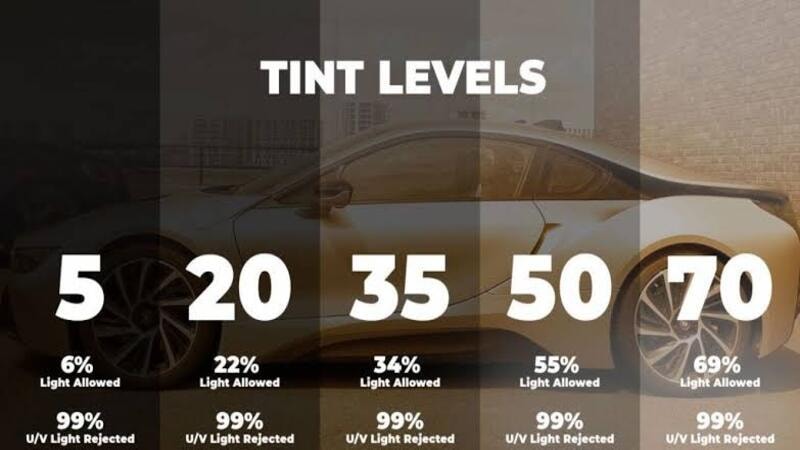
6. Brand Reputation
Who do you buy your films from? Premium brands may charge higher prices for their products than lesser-known ones.
Well-known brands with a history of producing high-quality products are likely to command higher prices due to that perceived quality and reliability. Sometimes, if you are looking for durability and performance, you may have to pay these high prices.
Types of Window Tinting
Just like you have many car wraps, window tinting options give you the opportunity to choose based on levels of heat rejection, UV protection, and glare reduction.
These choices affect the performance and the cost. So, take a quick look at the types of window tinting available. It’ll help you find what fits your business fleet best.
Dyed

Dyed window tinting is a popular and affordable option. It consists of a dye layer sandwiched between an adhesive layer and a protective outer layer. It absorbs sunlight when applied to your car windows, reducing glare and heat.
This type offers a more budget-friendly option. However, it doesn’t provide as much heat rejection or UV protection as other types.
Here are the pros and cons of dyed window tint:
| Pros | Cons |
|---|---|
| Dyed costs $99-$350. This is more budget-friendly compared to other types. | They are less effective at reducing heat compared to other types. |
| They don't interfere with GPS, radio signals, or other electronic devices in the vehicle. | While dyed films offer some UV protection, they are not as effective as other types in blocking harmful UV rays. |
| Dyed window tint reduces glare from headlights and sunlight. This enhances visibility and comfort for drivers. | They are prone to peeling and bubbling, especially in hot climates or if not installed properly. |
| Dyed films provide a more subtle appearance compared to mirrored tints as they do not have a reflective surface. | But provides minimal privacy compared to darker and more reflective tint options. |
If you’re looking for a cost-effective solution, dyed tinting is definitely a suitable choice. However, this type of window tint has limited functionality. So, let’s compare options first.
Metalized
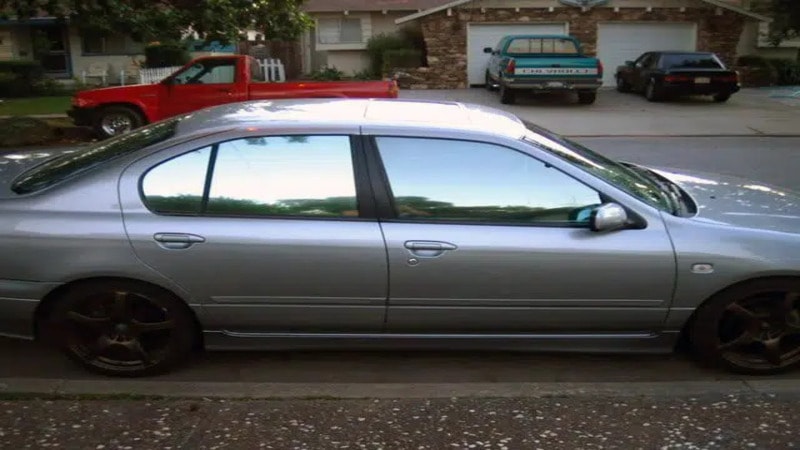
Metalized window tinting uses tiny metallic particles embedded in the film to block heat and UV rays. These particles reflect sunlight away from your vehicle.
Unlike other types, metalized tinting provides excellent durability. It’s more expensive than dyed tints but offers 4 to 6 years of protection.
The table below summarizes its pros and cons:
| Pros | Cons |
|---|---|
| Its initial cost of $120-$750 is cheaper than ceramic tinting. | It's more expensive than dyed window tints. |
| Offers excellent heat rejection properties to keep your vehicle cooler in hot weather. | May interfere with electronic signals such as GPS, radio, and cell phone reception. |
| Provides UV protection to reduce the risk of skin damage and interior fading. | The installation requires more time and effort compared to other types. |
| Gives you privacy by making it difficult for outsiders to see into the vehicle's interior. | Its slightly reflective surface may not be aesthetically pleasing. |
Metalized tinting offers a good balance of affordability and effectiveness. However, its composition may interfere with the electronic devices inside your vehicle.
Hybrid

Hybrid window tinting gives the best of dyed and metallic films. It combines layers of these respective films to achieve unique properties. The layer of metalized film provides heat and UV rejection, while the dyed one enhances color and appearance.
This combination offers superior heat reduction compared to dyed films alone. And you don’t have to worry about the interference sometimes caused by fully metallic tint options.
Even though this window tint offers you features of the metalized films, it is not as effective in blocking out heat as purely metalized ones. Hybrid tints also pales in comparison to ceramic window tints.
Here are the pros and cons of hybrid tinting that you should know:
| Pros | Cons |
|---|---|
| Hybrid tints provide moderate UV protection. | May not offer a high heat rejection as other types of tinting. |
| It reduces glare and enhances visibility. | But doesn't provide as much privacy as darker tint options. |
| More durable than traditional dyed films. | Requires professional installation for the best results. |
| It costs between $250-$800 depending on many factors . This may still be cheaper than ceramic tints. | But it's more expensive than traditional dyed films. |
Hybrid tint is a popular choice if you seek comfort and style but don’t want to sacrifice clarity on the road.
Ceramic

Ceramic window tinting is a premium option that uses ceramic particles to block heat and UV rays. This high-end tint allows visible light to pass through while blocking out infrared radiation. Thus, you get a cooler vehicle interior that is also safe from damage.
Unlike metalized tinting, ceramic tints don’t interfere with electronic signals. As most modern vehicles are equipped with advanced technology, ceramic window tint film is the ideal tinting option to invest in.
The table below summarizes its pros and cons.
| Pros | Cons |
|---|---|
| Ceramic tints block 50% to 70% of solar heat. | Its cost which ranges from $200-$1,220, can be more expensive than other options. |
| These provide excellent ultraviolet rays protection, blocking up to 99% of harmful UV rays. | Has limited options in terms of tint darkness. |
| They maintain high visibility both during the day and at night. This provides a clear view of the surroundings without impairing visibility. | May require more skill and expertise to install due to its composition and thickness. |
| Unlike some types of tint films, ceramic films are non-metallic. Therefore, they don't interfere with electronic devices. | May have limited shade options compared to other options. |
Ceramic window tinting is a top choice if you’re looking for long-lasting performance and a sleek appearance for your vehicle.
Carbon
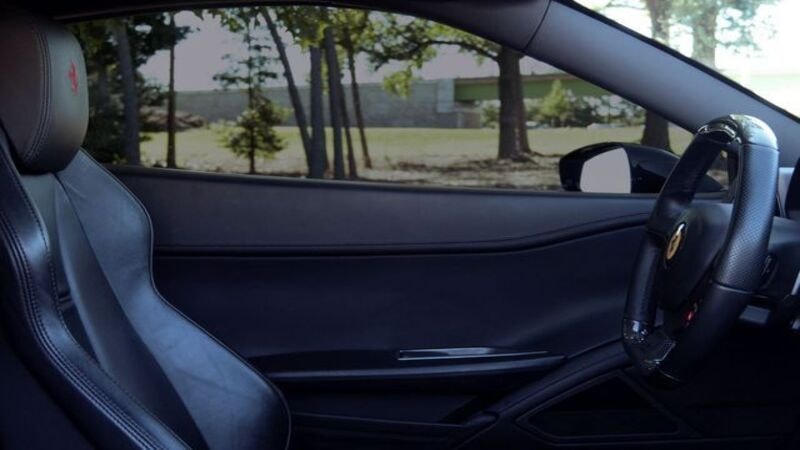
This non-conventional window tinting is made from layers of film containing carbon particles. The carbon components block sunlight and reduce heat. There are some differences between carbon window tint and ceramic tint; you’d better compare their different benefits to choose one that is more suitable.
For example, just like ceramic tints, this option is a step from metalized ones. It offers superior heat rejection without interfering with electronic signals. While its features don’t match ceramic tints, carbon film is a cheaper option.
Here are its pros and cons:
| Pros | Cons |
|---|---|
| Carbon tinting provides a sleek, matte finish that enhances the aesthetics of your vehicle. | There are fewer brands offering carbon films. This limits consumer choice. |
| They are resistant to fading. This ensures a longer lifespan compared to other materials. | But these films require professional installation for optimal results. |
| Offers minimal to no interference with electric signals. | Inferior quality or poorly installed films may interfere with electronic devices. |
Carbon tints offer superior features for a fraction of what you’ll spend on ceramic tinting. For a price range of $100-$450, you will shield your car from heat, glare, and UV rays.
How Much Does It Cost to Tint Windows?
We’ve broken down the expenses for different car types, film types, and labor to give you a clear picture of what you are investing in. So, how much is it to tint windows? Let’s find out.
Cost by Vehicle Type
Vehicles are different in terms of the number of windows, their shape, and size. Therefore, let’s see what you’ll pay for your car.
Sedans
These are among the most common vehicles on the road. In fact, you are likely to find one sedan in 5 vehicles you see. They fall in the mid-range cost bracket, averaging around $200 to $650. This price accounts for factors like how many windows you want to be tinted, their size and complexity, plus the type of tint chosen.
Coupes
You can expect to pay around $120 to $450 for window tinting. The smaller size of coupes means less material and labor, hence the lower cost compared to larger vehicles.
This price only reflects standard quality tinting. You might find variations depending on the tint brand, additional features, or the reputation of the installer.
Trucks
Window tint prices vary depending on the size of the truck. It costs an average of $300 to window tint a standard truck. Larger trucks or specialty vehicles might run a bit higher, possibly ranging from $350 to $500. So, it’s always wise to consult a professional to get an accurate quote tailored to your needs. Additionally, a professional can provide expert advice on the best type of tint for your vehicle and ensure a proper installation.
SUVs
You’re looking at a slightly higher average cost for SUVs compared to smaller vehicles. This is because they have larger windows that require more tinting material and labor. We are talking about $250-$750 here.
Tesla
While the general price falls between $200 to $800, high-end Teslas might require more specialized films, hence the higher costs. The size and shape of the windows of your Tesla also determine what you pay.
Cost by Type of Film
We already discussed this, but don’t worry. Here is a quick summary:
Dyed ($99-$350)
Dyed window tinting offers a budget-friendly option with its basic dye-infused film. You’ll get moderate heat and UV protection. Expect it to be the most affordable choice.
Metalized ($120-$750)
Although it gives a sleek, reflective finish, it might disrupt electronic signals like GPS and radio reception. This is a mid-range option but offers a more decent performance compared with dyed films.
Carbon ($100-$450)
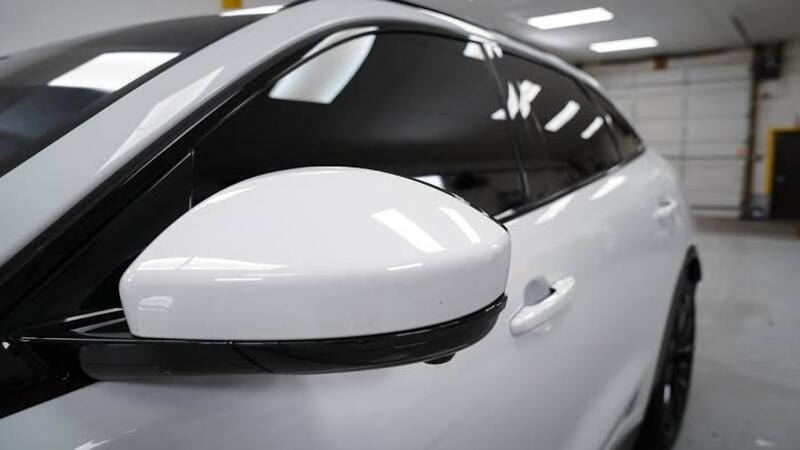
Carbon tinting offers similar benefits to ceramic films but at a slightly lower price point. You get excellent heat and UV protection while maintaining optical clarity.
Hybrid ($250-800)
This provides better heat rejection than dyed films. The protection is without as much signal interference as metalized ones. So, hybrid film is a good choice if you want to enjoy the benefits of both dyed and metalized tints.
Ceramic ($200-$1,220)
This is the best option for many car owners. Ceramic tint utilizes advanced ceramic particles for superior heat rejection and UV protection. It maintains clarity and doesn’t interfere with electronic signals. You’ll use it if you are prioritizing performance and aesthetics, albeit at a higher cost.
Labor and Installation

The cost of installing window tint isn’t just about the materials. You’ve got to consider the labor and installation, too.
Most installers will change according to the level of skill needed for the job, the complexity of your vehicle’s windows, and the location.
For example, it’s cheaper to tint windows on a sedan than on an SUV due to differences in window size. Specialized window shapes require more time and skill.
Laws
Regulations regarding vehicle window tinting vary by region. This means you might have limited options available to you. So, before you proceed, check the rules governing tinting in your area.
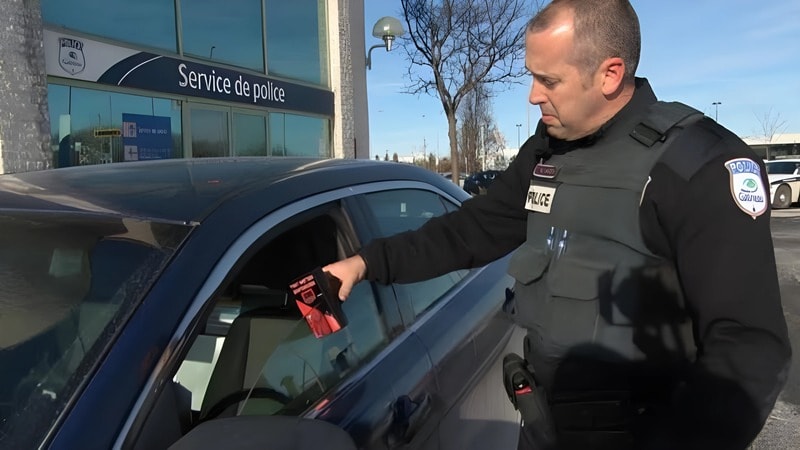
Tips for Choosing a Cost-Effective Window Tinting Film
You are probably looking for a car window tinting film that fits your budget and offers you quality. Here are some pointers to help you find an affordable option that meets your needs while staying within your budget.
Understand Your Needs
What matters most to you? Is it privacy, UV protection, or perhaps aesthetics? How you answer this question will determine the tint option you’ll pick.
If privacy is key, go for darker shades. If reducing glare is your goal, then consider films with higher heat rejection properties.
Explore Different Tinting Choices
It’s time for the next step since you already know what you’re looking for in a tinting film. There are several options that you should look into to settle on the best one for you.

Consider factors like the type of tint (dyed, metallic, ceramic), its shade and darkness level, and whether it offers UV protection or not. Each type has its own benefits and price points.
Make Sure to Know the Rules in Your Area
Let’s say you pick a tint that’s too dark for your region’s regulations. You might end up paying hefty fines. And you’ll have to replace the film altogether.
The simple solution: Know what is permitted by the law in your state. The budget from there. This will save you time and money.
Compare Prices
Just like you do your daily shopping, look at different suppliers and brands to compare prices. The tip is that you shouldn’t just stop at the price tag. Think about the quality, too. Sometimes, paying a bit more upfront can save you headaches down the road.
So, do some digging and compare those prices, and make sure you’re getting the best for your money.

Request Samples to See What You Like
Most brands, like CARLIKE®, offer samples of their premium window tinting films to show you how they look and perform.
You can place these samples on your vehicle’s windows to get a feel for their appearance and level of darkness. This step helps you make an informed decision based on your preferences and needs. Additionally, it ensures you get the best value and quality for your investment.
Evaluate Performance Ratings
Films are rated based on performance factors like Solar Heat Gain Coefficient (SHGC), Visible Light Transmission (VLT), and Ultraviolet (UV) protection. You should pay attention to these to ensure you’re getting a film that offers the right balance of heat reduction, natural light transmission, and UV blocking.
Frequently Asked Questions
Here are the most commonly asked questions about window tinting:
1. Is Car Window Tinting legal?
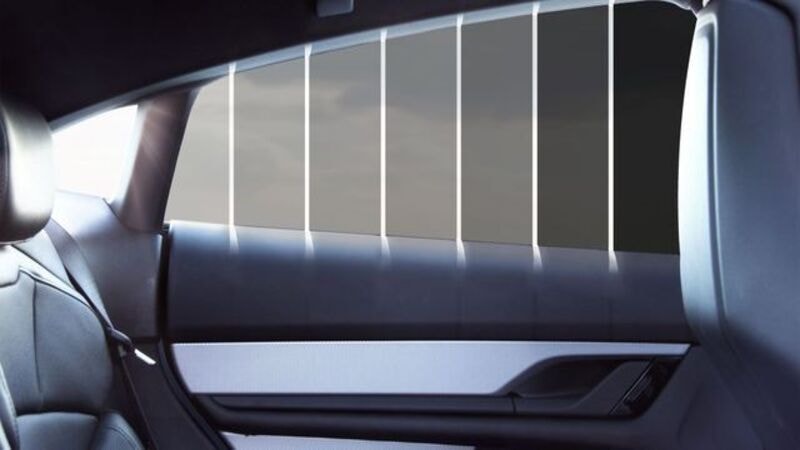
Car window tinting laws vary by location. That’s why we advise you to check your local regulations before tinting your vehicle. These laws specify the allowable tint darkness for windows. Some areas also have restrictions on the tint’s reflectiveness. Non-compliance could result in fines or the need to remove the tint.
2. What are the Benefits of Car Window Tinting?
Here are the benefits that tinted car windows may bring you:
- Shields you from harmful UV rays.
- It makes your driving experience safer and more comfortable.
- Lowers the need for excessive air conditioning.
- Protects your upholstery and dashboard from fading due to sun exposure.
- Gives your car a sleek and polished look.
3. How Much Is Window Tinting?

Prices for automotive window tinting depend on the type of film you choose, the size of your vehicle’s windows, and other factors. On average, you’re looking at anywhere from $100 to $400 for a standard car, but this could go higher for larger vehicles or if you opt for premium tinting materials.
4. How Long Does Tinted Windows Last?
Quality tinting lasts anywhere from 5 to 10 years. This may vary depending on factors like the type of film used, climate conditions, and how well you maintain it. UV exposure, scratches, and improper installation can all impact its lifespan. But if you invest in a reputable installer and take good care of your tint, you can enjoy those sleek, shaded windows for quite a while.
5. Can I Open My Car Windows Right After Tinting?
You should wait at least two to four days before rolling them down. This allows the tint to cure and adhere to the glass properly. Opening the windows too soon could disrupt the tinting process, causing it to peel or bubble. While it might be tempting to enjoy the ride immediately, patience is key for long-lasting results.

Conclusion
Window tinting prices are not set in stone. They vary depending on the type of tint used, the size of the windows, different tinting laws and so on. It also gives 6 tips to help you choose the right window tint wisely. It is recommended to invest more in a better tint, which can save more in the long term.
Upgrade Your Fleet with CARLIKE® Window Tint Films Today
Beat the heat and protect your interior with our advanced tint films. Carlike‘s scratch-resistant, shatterproof films provide crystal-clear visibility with enhanced privacy and safety. Are you still hesitating? Get a sample to test our industry-leading quality!
Contact us now for a personalized quote – your cooler, safer drive starts here!



